20 Zero Waste Cleaning Products for the Home
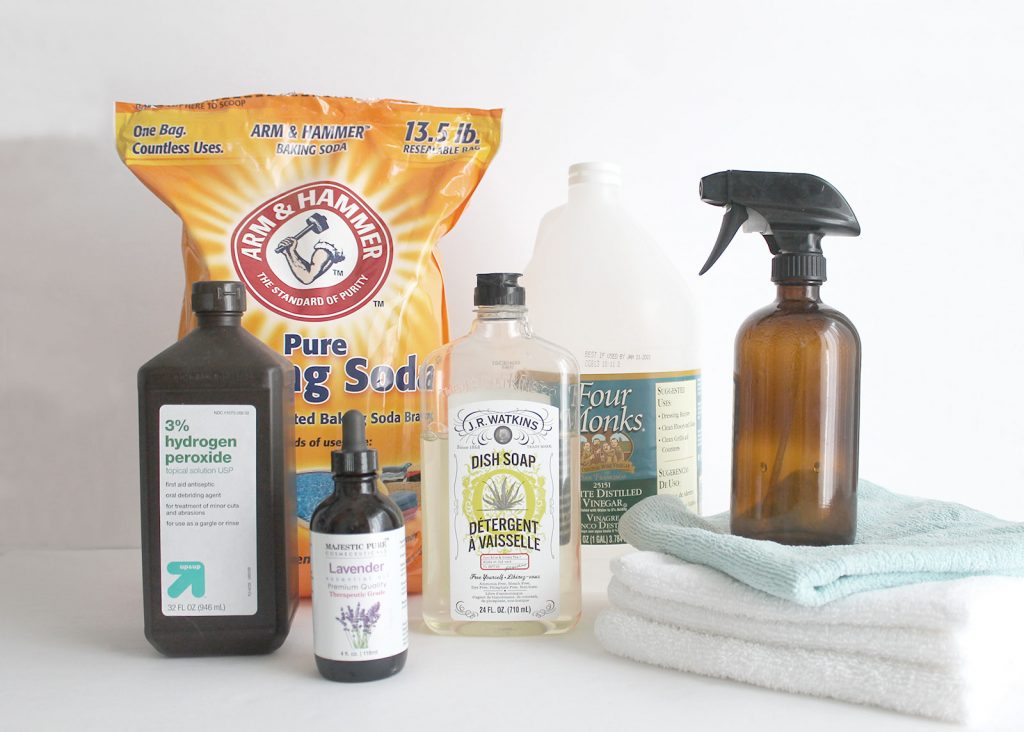
I have been cleaning my home using natural, zero waste cleaning products for years now. It is not only better for the health of my family, it’s better for the environment!
We do our best buy cleaning ingredients in bulk, then refill our spray bottles over and over again as necessary. This minimizes the amount of packaging waste we generate or consume which is something we can feel good about.
To make this transition to green, eco-friendly cleaning as seamless as possible, I created a printable guide and checklist for you!
Download my FREE green cleaning tools and ingredients checklist!
Quick Navigation
Zero Waste Cleaning Tools and Ingredients
Tools
- Glass Spray Bottles
- Stainless Steel Funnel
- Scrub Brush (compostable)
- Microfiber Cloths (or cotton cleaning cloths if you do not want to use microfiber)
- Cleaning Caddy (optional, but highly recommended)
- Toilet Brush (optional toilet brush plus holder)
Ingredients
Just about every cleaning product I use in my home is derived from a small list of natural ingredients easily purchased in bulk quantities:
- Vinegar
- Baking Soda
- Dish Soap
- Hydrogen Peroxide
- Isopropyl Alcohol
- Mineral Oil
- Essential Oils with cleaning properties:
Zero Waste Kitchen Cleaning Products

1. All-Purpose Cleaner
This solution can be safely used on just about any surface in your home, from cabinets to countertops to floors… If you like the simplicity of using just ONE cleaner for almost everything then this is a solid option.
- 1tsp Dish Soap
- 2c Water
- 5-10 drops Essential Oil (antibacterial properties: eucalyptus, tea tree, oregano, lavender)
NOTE: While this certainly works as an “all purpose” cleaner, it doesn’t mean it’s the BEST cleaner for every purpose in your home. If you’re looking for what’s best to use in each area of your home, keep reading for my recommendations.
2. Tile Countertops
- 1 part Vinegar
- 1 part Distilled Water (or filtered water)
- 5-10 drops Essential Oil (I recommend using essential oils with antibacterial properties: eucalyptus, tea tree, oregano, lavender)
Spray and wipe up with a microfiber cloth.
3. Granite Countertops
When cleaning any type of stone surface, you want to avoid vinegar, lemon juice, or any other acidic ingredients. Acid can etch or weaken the surface of stone. This solution contains alcohol which dries quickly and will leave your sealed granite countertops clean and streak free.
- ⅛ tsp (a few drops) Dish Soap
- ¼ c Isopropyl Alcohol
- 1 c Water
- 5-10 drops Essential Oil (I recommend using essential oils with antibacterial properties: eucalyptus, tea tree, oregano, lavender)
For other types of stone countertops (marble, onyx, etc.) it’s best to play it safe with the gentle all-purpose cleaner recipe.
4. Butcher Block Countertops
- Dish Soap
- Hot Water
- Vinegar
- Mineral Oil
Scrub your countertop with soap and hot water to clean, then rinse with a clean sponge or rag and water. Sanitize by spraying with vinegar and wiping with a clean cloth. Lastly condition the wood with mineral oil once a month.
5. Kitchen Sink
- Hydrogen Peroxide (for removing stains from porcelain)
- Baking Soda
- Dish Soap
White Porcelain Sink: Sprinkle baking soda over stains then dampen your sponge with hydrogen peroxide before scrubbing the baking soda into the sink. It’s amazing how well this removes stains – I even filmed a video to prove it!
Stainless Steel Sink: Sprinkle sink with baking soda then scrub with a sponge and some dish soap to leave your sink looking perfectly shiny!
6. Garbage disposal
- Ice cubes (Vinegar ice cubes also minimize weird smells)
- Lemon
Grinding ice cubes will help sharpen the garbage disposal blades, while lemon rinds will improve its smell.
7. Microwave
- Lemon
- Water
Fill a microwave-safe bowl with water and lemon slices, then microwave for 4 minutes. Let the bowl sit inside of the microwave for a few extra minutes until it’s cool enough to touch and the walls of the microwave are dampened from the steam. Open the microwave and wipe down all surfaces with a sponge and microfiber cloth. Watch this video to see how-to.
8. Dishwasher
Interior: Once a week (at least), run your wash cycle with a ceramic bowl or mug filled with 1-2 cups of white vinegar. Place the vinegar cup or mug on the top shelf and run a very hot cycle. Vinegar will help eliminate any lingering odors as well as prevent hard water buildup or discoloration of the interior of your dishwasher.
Filter: Every time you unload your dishwasher, remove the filtration parts from the bottom of your dishwasher. Rinse and scrub each part of the filtration system with a brush or a sponge. Lastly, check the holes on the spray arm to make sure they aren’t clogged with food particles. Clogged spray arms reduces your dishwasher’s cleaning power and may leave your dishes and utensils dingy. You can pick them clean with a toothpick.
9. Refrigerator
Remove all fridge contents including drawers and removable shelves. Wash shelves and drawers in the sink with warm soapy water, then dry with a microfiber cloth. Use a sponge and soapy water to scrub down the interior of the fridge. Follow up with a clean sponge and water to wipe away soap residue then dry with a microfiber cloth.
For stubborn grimey spots, sprinkle with baking soda for extra scrubbing power.
10. Stainless Steel Appliances
- 1 part Vinegar
- 1 part Water
- Mineral Oil
Spray the exterior with a homemade cleaning solution that consists of 1 part white vinegar and 1 part water. Use a microfiber cloth to wipe away any fingerprints or other marks from the stainless steel surface.
Polish with a small dab of mineral oil (olive oil also works) on a cleaning cloth.
11. Wood Table and Furniture
- 2 tbsp Mineral Oil
- 2 tbsp Vinegar
- 4 c (1 quart) Water
Spray on & wipe off wood furniture and surfaces. The mineral oil also helps to slow down dust collection on wood shelves and tabletops.
Zero Waste Bathroom Cleaning Products
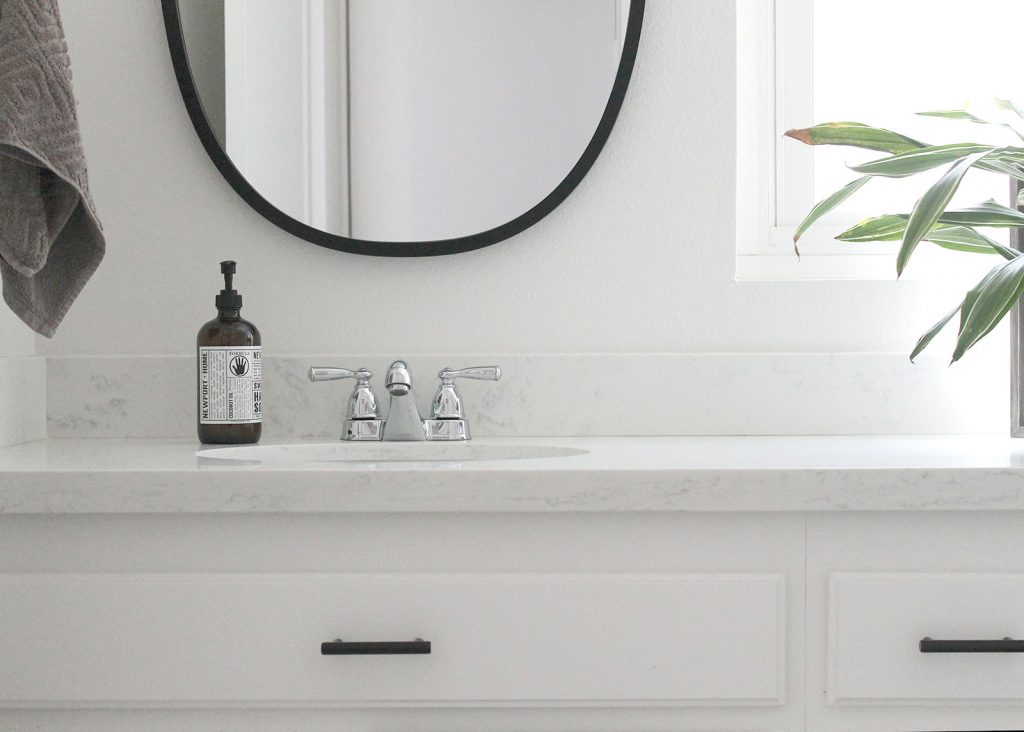
12. Toilet Bowl
- ½ cup Baking Soda
- ¼ c Vinegar
- 5-10 drops Essential Oil (antibacterial properties: eucalyptus, tea tree, oregano, lavender)
Flush the toilet then sprinkle baking soda around the walls of the toilet bowl and let sit for 5 minutes. Scrub with a brush then rinse the toilet bowl walls with vinegar and continue scrubbing as the mixture foams. Flush the toilet once more then let the toilet brush dry horizontally propped underneath the toilet seat for 15 minutes before putting away.
13. Tile, Glass, Mirrors, Exterior Toilet Surfaces
- 1 c water
- 1 c Vinegar
- 5-10 drops Essential Oil (antibacterial properties: eucalyptus, tea tree, oregano, lavender)
Spray and let sit for a few minutes before wiping away.
More about glass and mirror cleaner.
14. Shower & Tub
Heat in the microwave for 30 seconds, shake, then spray all over your shower tile and tub (caution: do NOT use this solution if your shower has natural stone tile or surfaces). Let sit for 30 minutes before scrubbing with a sponge then rinsing.
15. Stubborn Shower & Tub Stains
- 1 part Baking Soda
- 1 part Dish Soap
Mix baking soda and dish soap into a paste and scrub it on grungy areas. Let the paste sit for 15-30 minutes then scrub with a sponge and rinse.
Zero Waste Floor Cleaning Products

16. Wood Floors
Use this mixture in a bucket with a mop, sponge, or cleaning rag. Alternatively, us it as a spray on your floors and mop up with a microfiber swiffer attachment.
17. Laminate, Tile, & Stone Floors
- 2 tbsp Dish Soap
- 2 gallons Hot Water
- 5-10 drops Essential Oil (antibacterial properties: eucalyptus, tea tree, oregano, lavender)
Especially when cleaning any type of stone surface, you want to avoid vinegar, lemon juice, or any other acidic ingredients. Acid can etch or weaken the surface of stone (especially on marble, onyx, and travertine [source]). A simple solution of dish soap and water should suffice for most floor types.
19. Grout
- ⅛ c Lemon Juice
- ⅛ c Baking Soda
- ¼ c Vinegar
- 2 c Water
Combine all ingredients into a spray bottle, spray on grout and let it sit for 30 minutes to an hour. Using a scrub brush (or cleaning toothbrush), give your grout a good scrub. Use a towel to wipe up extra moisture as you clean, then follow up with a clean, wet cloth or sponge to wipe up any cleaning product residue.
20. Carpet and Rugs
Carpet stain removal recipes depend largely on the type of stain as well as the carpet material. For instance, oil-based stains should be immediately covered with baking soda or cornstarch to absorb excess oil, then followed up with dish soap and water.
Wine stains can be treated with seltzer water then by scrubbing with dish soap.
With that said, if you have a wool carpet or rug you cannot treat stains with water.
Here is a comprehensive list of stain removal recipes!
Cleaning without Paper Towels
If you are used to cleaning with paper towels, the concept of using reusable towels and rags might seem intimidating. If you’re unsure about what cleaning cloths to use, where to store dirty cloths in between washes, and other tools that might be helpful in your quest to go paper-free, read my post about a paper-free kitchen.



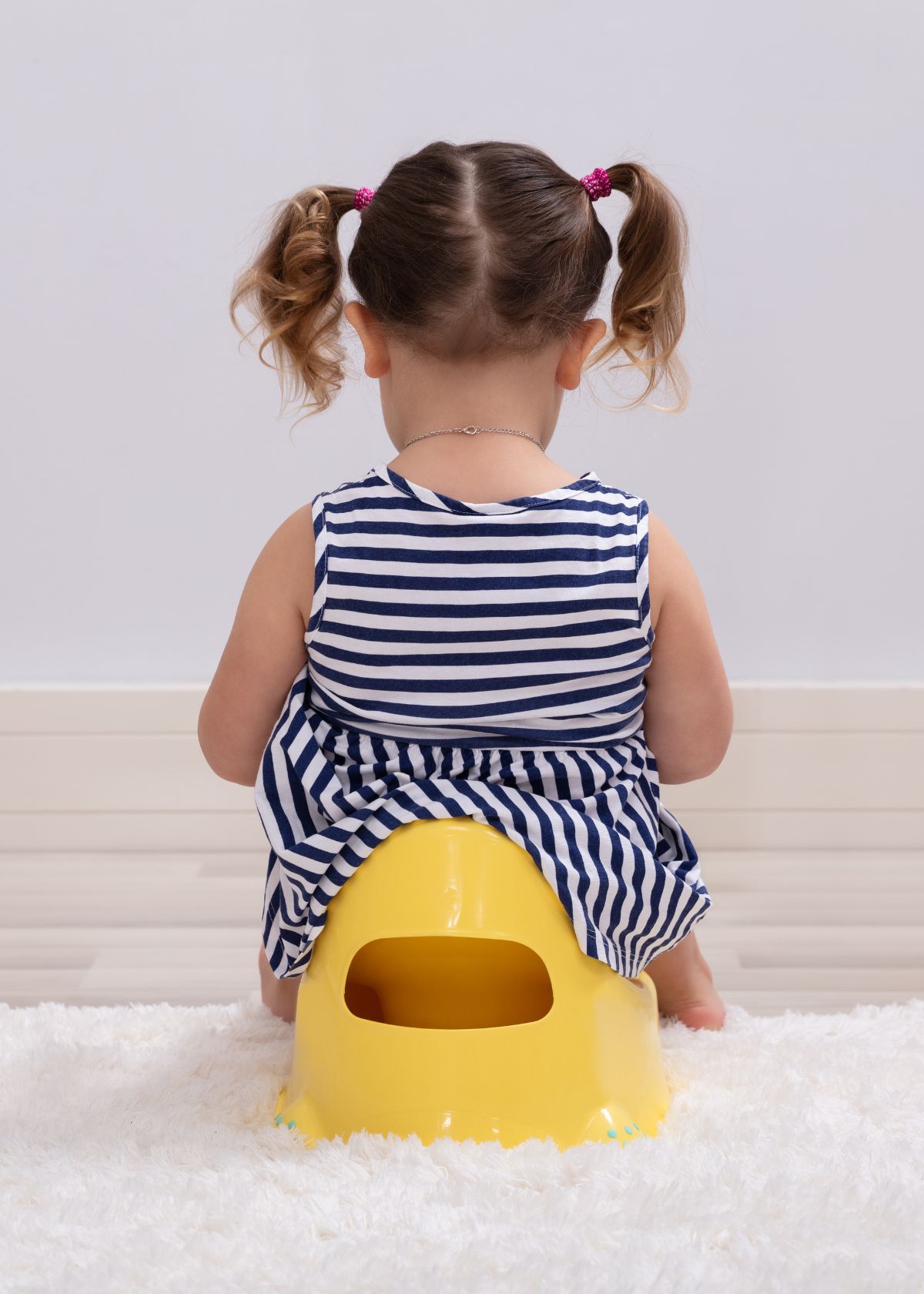
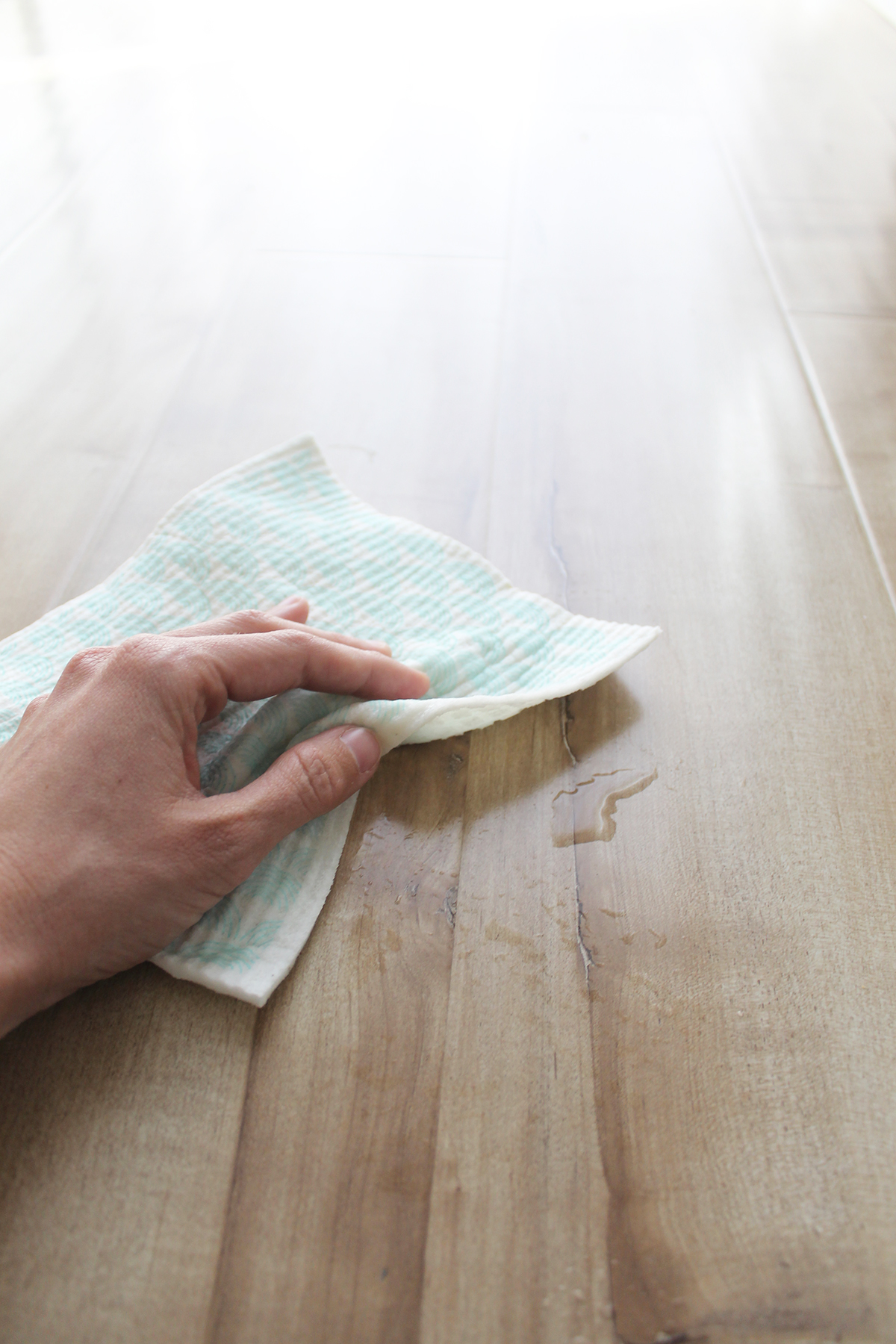
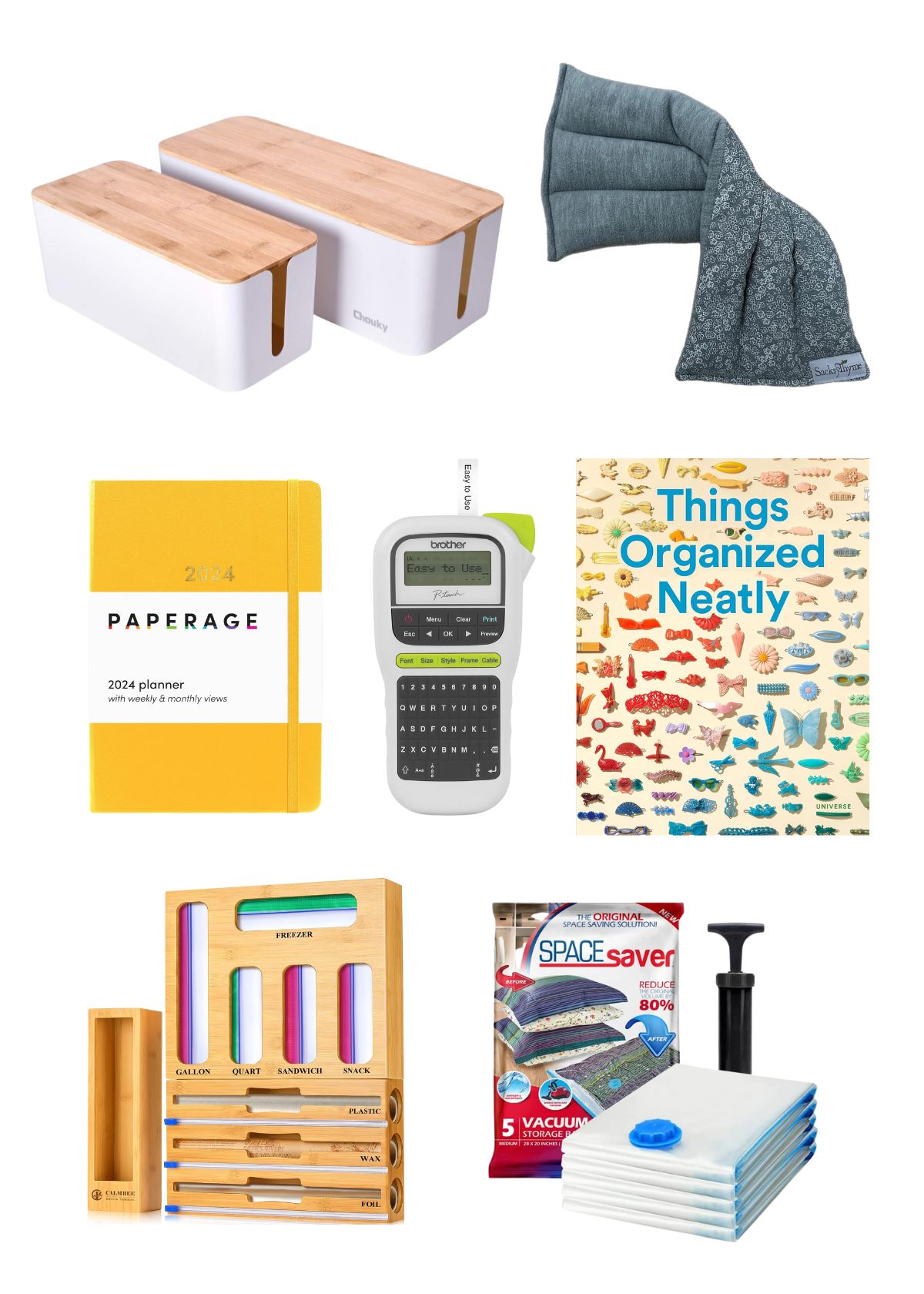
Thank you I enjoyed looking at your recipes.
I came to your site as it advertised zero waste products. Unfortunately, the first picture contains your ingredients packed in plastic packaging; baking soda, dish soap, etc. Not zero waste options. Would not baking soda purchased in cardboard boxes and vinegar in glass bottles that are recyclable be a better solution to the zero waste concept you are advertising? Just some thoughts to consider.
Hi Tracy! Thanks for the comment 🙂 You’re certainly right, cardboard and glass are materials that are much easier to recycle than plastic packaging. While those options (or even better, a bulk store refillery!) are ideal, they aren’t always readily available or require shipment (and therefore additional packaging) from far away locations. My goal is simply to encourage others (myself included!) to do their best with the resources available. Opting for bulk options whenever possible in recyclable packaging is ideal, but not beating ourselves up about a little bit of plastic now and again when alternatives are not readily available is also important! <3